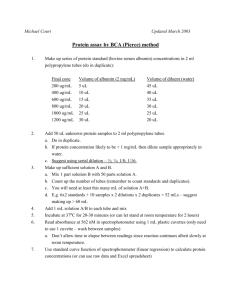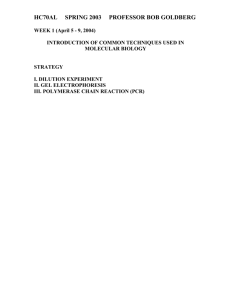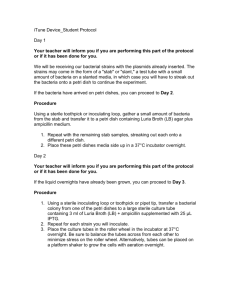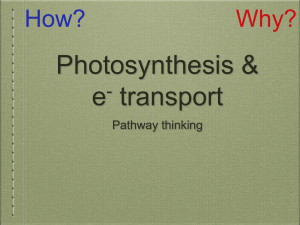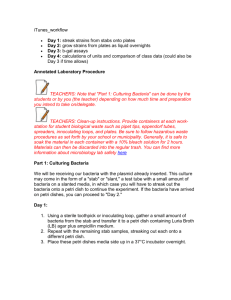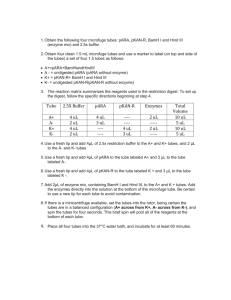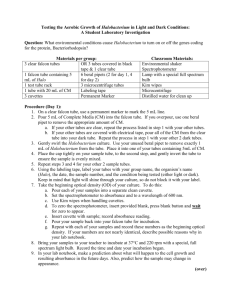- BioBuilder
advertisement
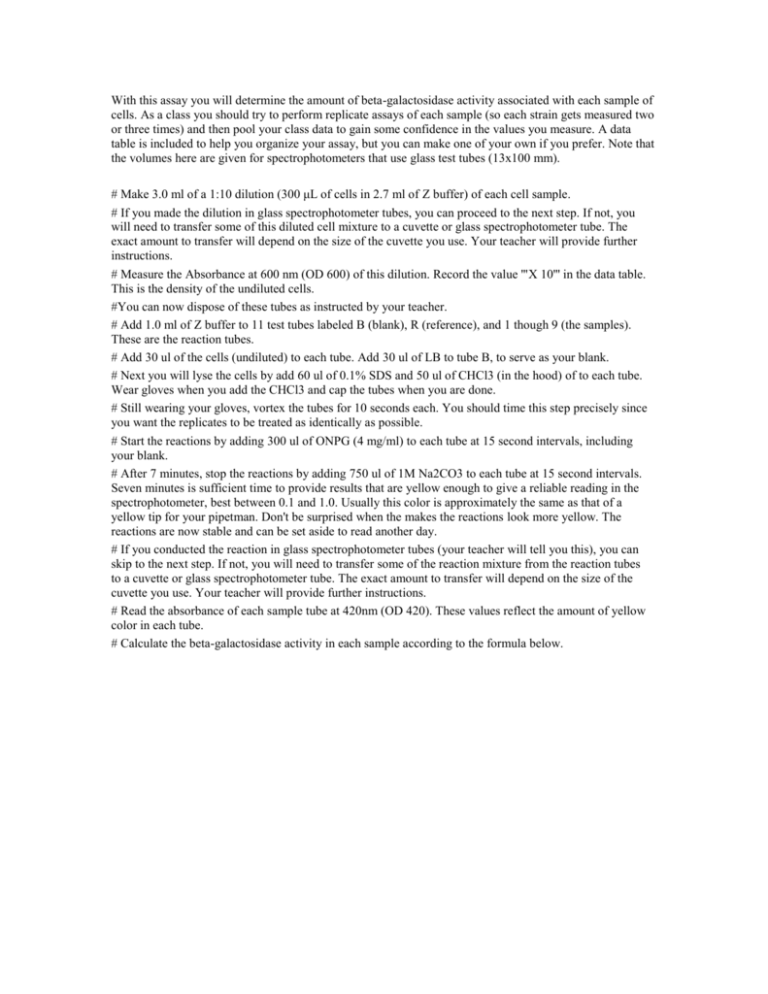
With this assay you will determine the amount of beta-galactosidase activity associated with each sample of cells. As a class you should try to perform replicate assays of each sample (so each strain gets measured two or three times) and then pool your class data to gain some confidence in the values you measure. A data table is included to help you organize your assay, but you can make one of your own if you prefer. Note that the volumes here are given for spectrophotometers that use glass test tubes (13x100 mm). # Make 3.0 ml of a 1:10 dilution (300 μL of cells in 2.7 ml of Z buffer) of each cell sample. # If you made the dilution in glass spectrophotometer tubes, you can proceed to the next step. If not, you will need to transfer some of this diluted cell mixture to a cuvette or glass spectrophotometer tube. The exact amount to transfer will depend on the size of the cuvette you use. Your teacher will provide further instructions. # Measure the Absorbance at 600 nm (OD 600) of this dilution. Record the value '''X 10''' in the data table. This is the density of the undiluted cells. #You can now dispose of these tubes as instructed by your teacher. # Add 1.0 ml of Z buffer to 11 test tubes labeled B (blank), R (reference), and 1 though 9 (the samples). These are the reaction tubes. # Add 30 ul of the cells (undiluted) to each tube. Add 30 ul of LB to tube B, to serve as your blank. # Next you will lyse the cells by add 60 ul of 0.1% SDS and 50 ul of CHCl3 (in the hood) of to each tube. Wear gloves when you add the CHCl3 and cap the tubes when you are done. # Still wearing your gloves, vortex the tubes for 10 seconds each. You should time this step precisely since you want the replicates to be treated as identically as possible. # Start the reactions by adding 300 ul of ONPG (4 mg/ml) to each tube at 15 second intervals, including your blank. # After 7 minutes, stop the reactions by adding 750 ul of 1M Na2CO3 to each tube at 15 second intervals. Seven minutes is sufficient time to provide results that are yellow enough to give a reliable reading in the spectrophotometer, best between 0.1 and 1.0. Usually this color is approximately the same as that of a yellow tip for your pipetman. Don't be surprised when the makes the reactions look more yellow. The reactions are now stable and can be set aside to read another day. # If you conducted the reaction in glass spectrophotometer tubes (your teacher will tell you this), you can skip to the next step. If not, you will need to transfer some of the reaction mixture from the reaction tubes to a cuvette or glass spectrophotometer tube. The exact amount to transfer will depend on the size of the cuvette you use. Your teacher will provide further instructions. # Read the absorbance of each sample tube at 420nm (OD 420). These values reflect the amount of yellow color in each tube. # Calculate the beta-galactosidase activity in each sample according to the formula below.
